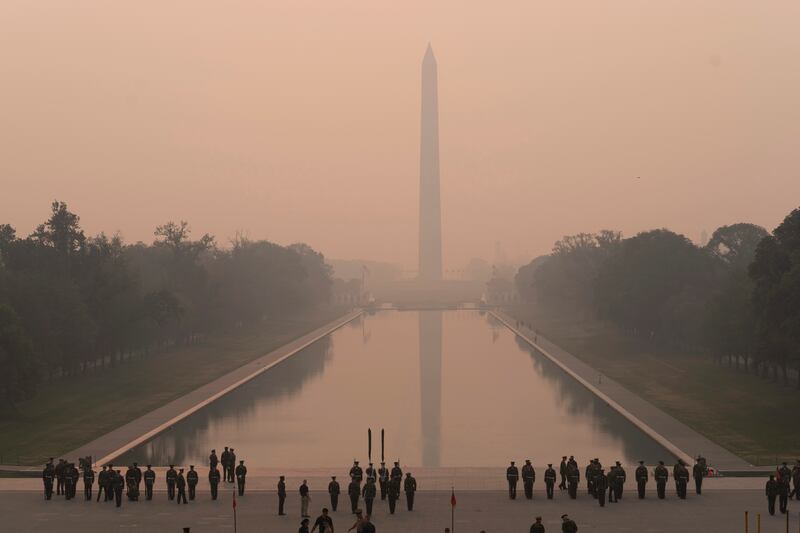Wildfires spread in the western Canadian province of British Columbia on Friday, while hundreds of fires continued to burn on the other side of the country in Quebec, sending wildfire smoke billowing across North American cities.
Canada is enduring its worst start to the wildfire season, with 2,392 fires so far this year and 4.4 million hectares burned, according to the Canadian Interagency Forest Fire Centre (CIFFC), roughly 15 times the annual average over the last decade.
The CIFFC reported 427 active fires, of which 232 were out of control.
Around 2,500 people were told to evacuate the community of Tumbler Ridge in northeastern British Columbia on Thursday. Officials also expanded evacuation orders for the Donnie Creek fire, the second-largest recorded in the province.

But in the eastern province of Quebec, fire fighters contained blazes that had threatened hydroelectric facilities in the Lac-Saint-Jean area, about 300km north of Quebec City, public broadcaster Radio-Canada said on Friday.
Rain and higher humidity levels helped the work of crews, Radio-Canada cited a spokesman for a provincial firefighting agency as saying.
Federal authorities said this week they were concerned by the threat that blazes could pose to critical infrastructure.
Temperatures in parts of British Columbia soared to more than 30 degrees this week, nearly 10 degrees above the seasonal average. While rain is expected over the weekend there is a risk of lightning strikes.
Although wildfires are common in Canada, it is unusual for blazes to be burning simultaneously in the east and west, stretching resources and fuelling concerns about the worsening consequences of climate change.
In the western province of Alberta, more than 3,500 people remain under evacuation orders and heat warnings were in effect over much of the central part.
Wildfire smoke continued to plague millions of people across eastern Canada and the northeastern United States.
Poor air quality is expected to persist in cities including Ottawa, Toronto, New York and Washington until Sunday when the wind direction shifts.

Nearly a third of the fires burning across Canada are in Quebec, more than any other province. Rain is expected in Quebec and neighbouring Ontario on Monday.
Firefighters from countries, including South Africa, Australia and New Zealand, as well as hundreds of US firefighters, have arrived in Canada to help tackle the blazes.
Meanwhile, the mass of smoky air that choked New York, Washington and other US cities earlier this week moderated on Friday as it drifted as far south as the Florida Panhandle, and conditions improved to “moderate” along most of the country’s eastern seaboard.
The US National Weather Service said air quality had improved in areas along the east coast, but hazy skies and degraded air quality persisted in pockets of the mid-Atlantic, the Ohio Valley and Eastern Great Lakes region.
The haze was still severe enough on Friday for the weather service to issue air quality alerts for pockets of the Carolinas and elsewhere in the southeast, as well as in some parts of Texas and Oklahoma.
Further north, air quality alerts remained in effect, including some “Code Orange” designations in Baltimore and Washington, where a day earlier the smoke was thick enough to obscure the top of the 169m tall Washington Monument. – Reuters
(c) Copyright Thomson Reuters 2023













